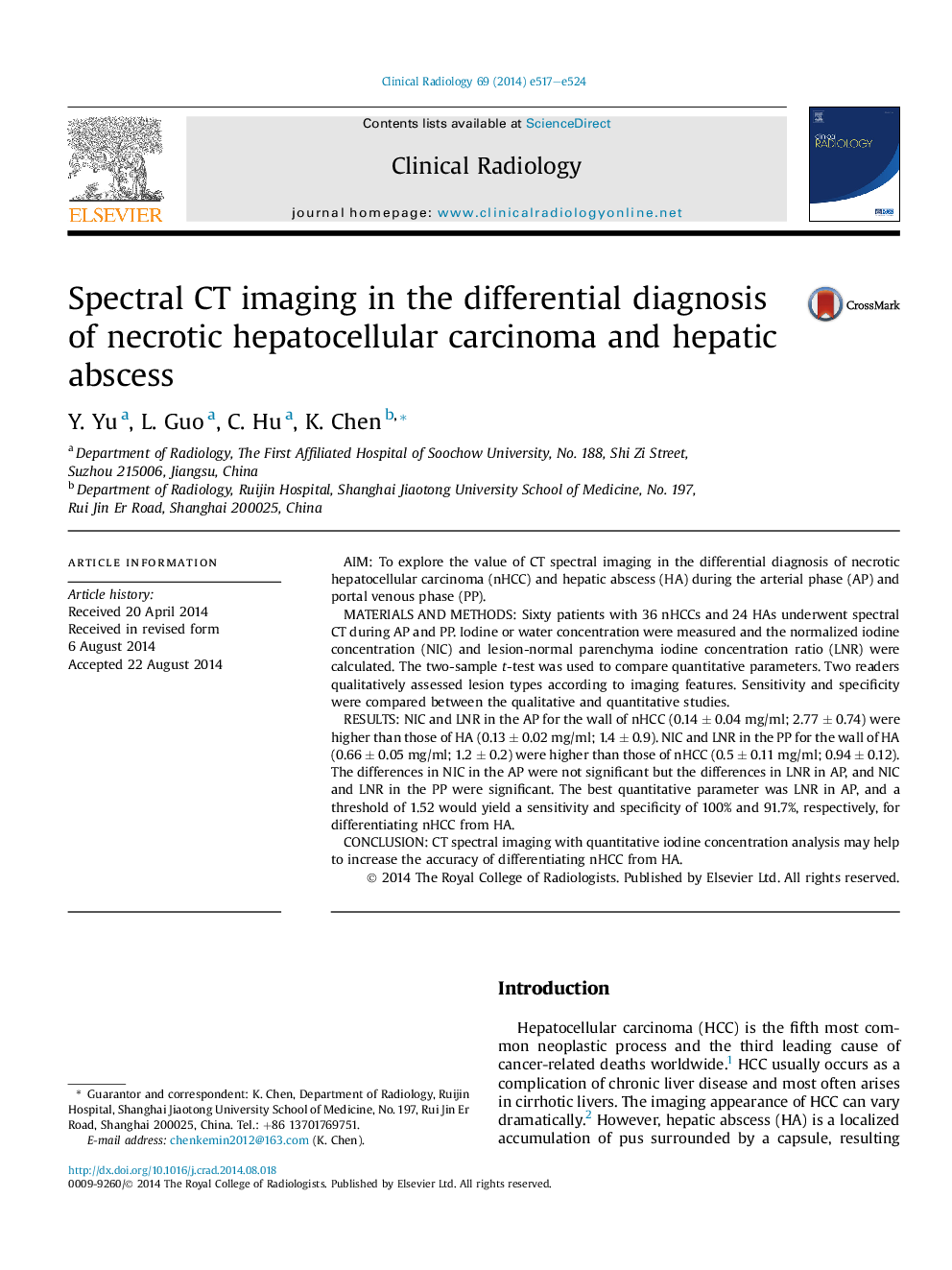| Article ID | Journal | Published Year | Pages | File Type |
|---|---|---|---|---|
| 3981664 | Clinical Radiology | 2014 | 8 Pages |
•We preliminarily investigate the usefulness of CT spectral imaging in differentiating nHCC from HA.•CT spectral imaging may help differentiate necrotic hepatocellular carcinoma from hepatic abscess.•CT spectral imaging can evaluate the blood supply and necrotic degree of lesions.•Quantitative analysis of iodine concentration provides greater diagnostic confidence.
AimTo explore the value of CT spectral imaging in the differential diagnosis of necrotic hepatocellular carcinoma (nHCC) and hepatic abscess (HA) during the arterial phase (AP) and portal venous phase (PP).Materials and methodsSixty patients with 36 nHCCs and 24 HAs underwent spectral CT during AP and PP. Iodine or water concentration were measured and the normalized iodine concentration (NIC) and lesion-normal parenchyma iodine concentration ratio (LNR) were calculated. The two-sample t-test was used to compare quantitative parameters. Two readers qualitatively assessed lesion types according to imaging features. Sensitivity and specificity were compared between the qualitative and quantitative studies.ResultsNIC and LNR in the AP for the wall of nHCC (0.14 ± 0.04 mg/ml; 2.77 ± 0.74) were higher than those of HA (0.13 ± 0.02 mg/ml; 1.4 ± 0.9). NIC and LNR in the PP for the wall of HA (0.66 ± 0.05 mg/ml; 1.2 ± 0.2) were higher than those of nHCC (0.5 ± 0.11 mg/ml; 0.94 ± 0.12). The differences in NIC in the AP were not significant but the differences in LNR in AP, and NIC and LNR in the PP were significant. The best quantitative parameter was LNR in AP, and a threshold of 1.52 would yield a sensitivity and specificity of 100% and 91.7%, respectively, for differentiating nHCC from HA.ConclusionCT spectral imaging with quantitative iodine concentration analysis may help to increase the accuracy of differentiating nHCC from HA.
